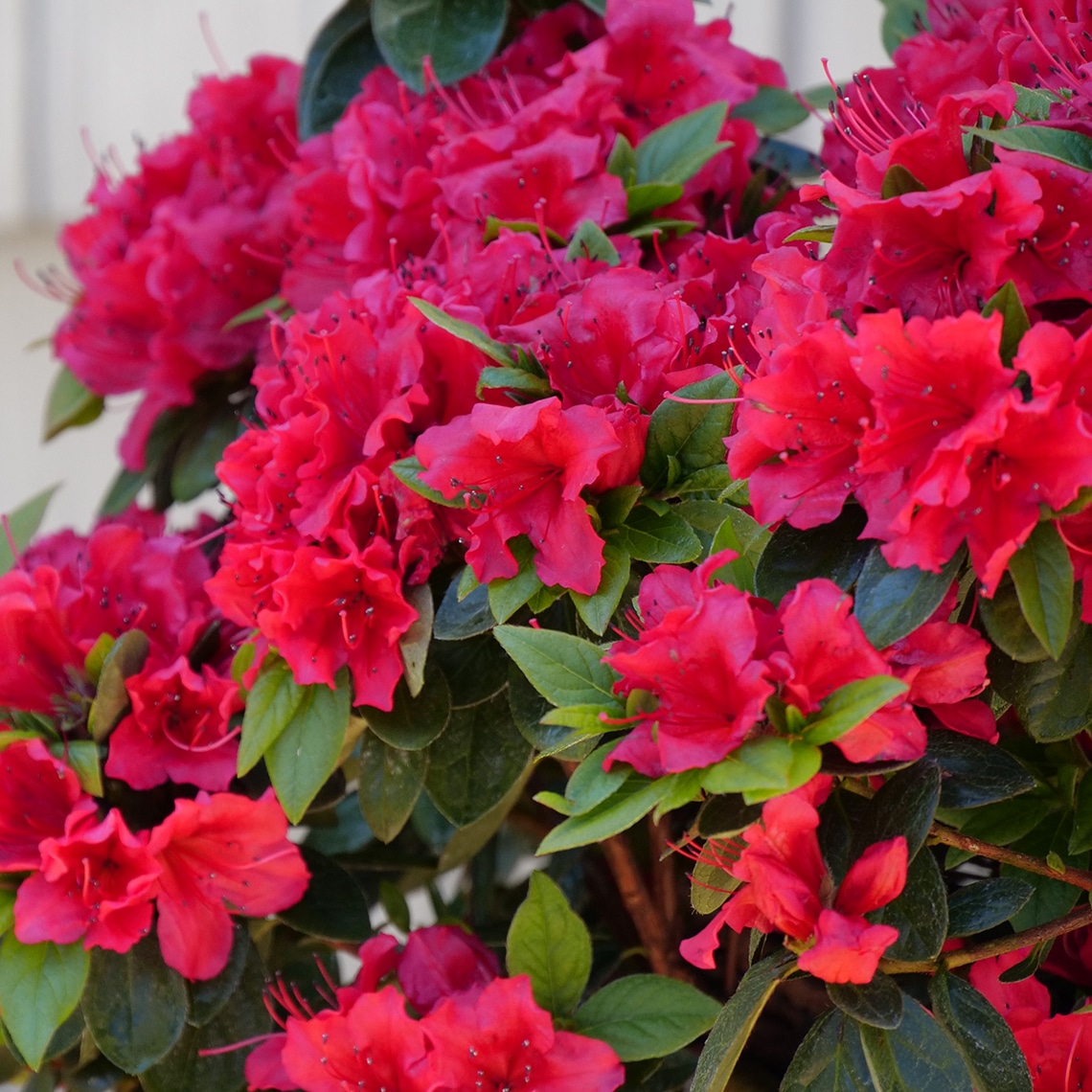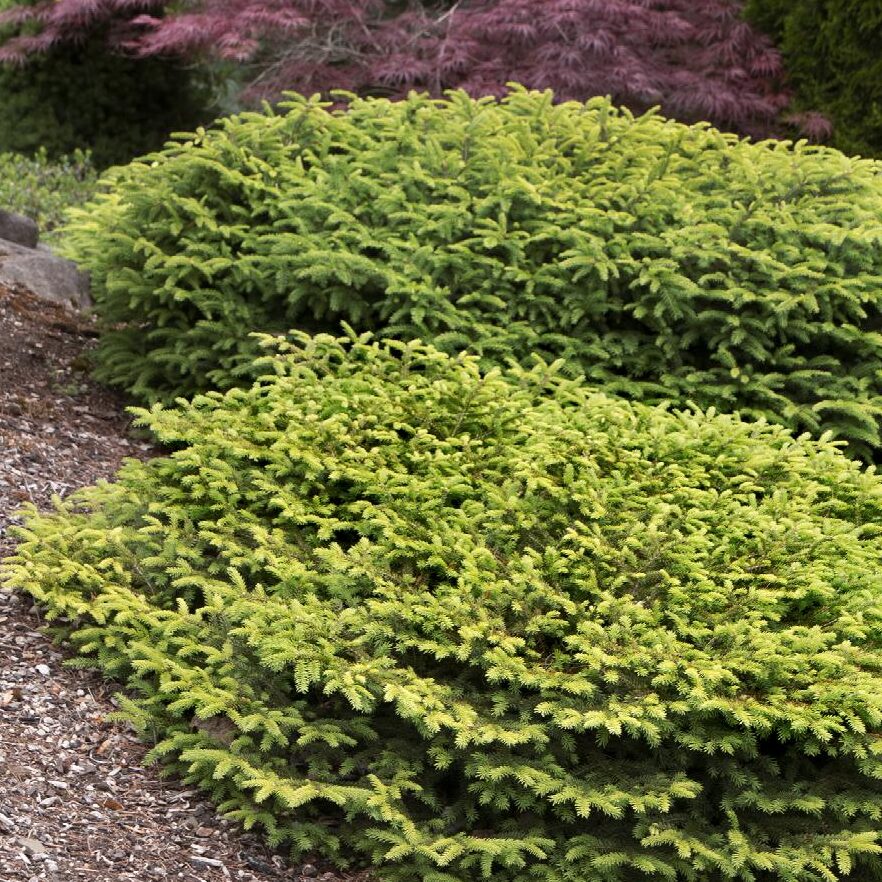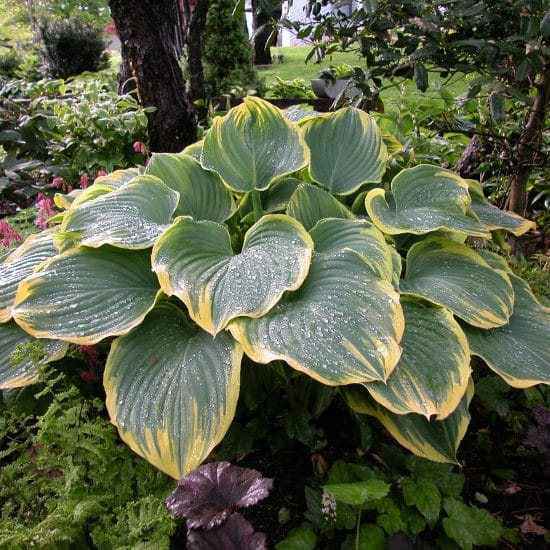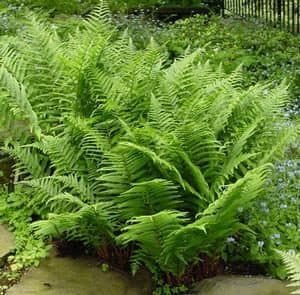Acer palmatum
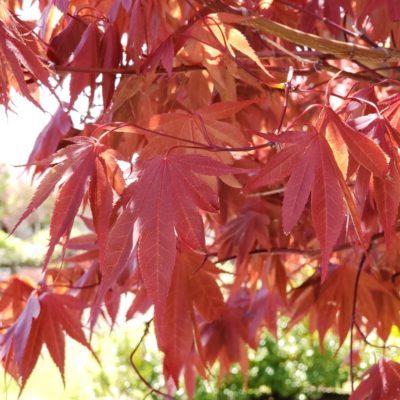
Red and purple leafed Japanese Maples are prized for their rich, contrasting colors. Leaves emerge bright red before deepening in the summer and finally turning shades of orange and scarlet in the fall. Upright Japanese Maples take on an open, sculptural form as they grow, adding a touch of elegance to the landscape. They make excellent specimens for shadier areas or close to buildings.
These versatile trees are not picky about soil conditions, but they do not like to stay soggy. They are also susceptible to damage from harsh winds, especially in winter, so plant in a sheltered location such as near a building or large evergreens.
Featured Varieties:
Bloodgood – Bright burgundy spring growth matures to maroon. Leaves turn bright, warm red in fall. 15-20 ft tall in 10 years.
Emperor 1 – Spring growth is rich, shiny maroon. Color is held through summer followed by vibrant red fall color. 12-15 ft tall in 10 years.
Fireglow – Leaves emerge hot red in spring and mature to maroon with a bronze underside, giving the tree a glowing appearance. Fiery red in fall. 12-15 ft tall in 10 years.
Pung Kil – Long, slender leaves emerge bright red and darken to maroon through summer. Red-orange fall color. 12-15 ft tall in 10 years.
- While able to tolerate full sun in cooler weather, Japanese Maples need afternoon shade to look their best through Missouri’s hot summers.
- Japanese Maples are susceptible to harsh winds, especially in winter. Consider planting them near a building, or add companion plants such as evergreens and large shrubs for extra protection.
- Avoid planting in soggy sites, but keep Japanese Maples well-watered through their first few years. They grow slow, so consistent moisture is key to getting their roots to take hold. Compost and mulch will help retain even soil moisture.
- Regular pruning isn’t necessary, but it is best to remove any dead or crisscrossed branches at least once a year.
Consider these companion plants:

